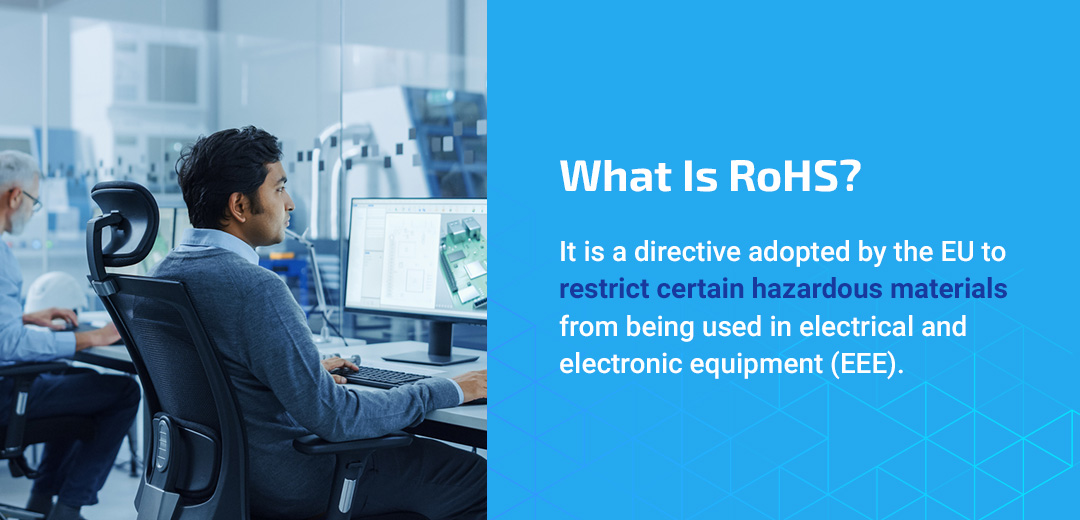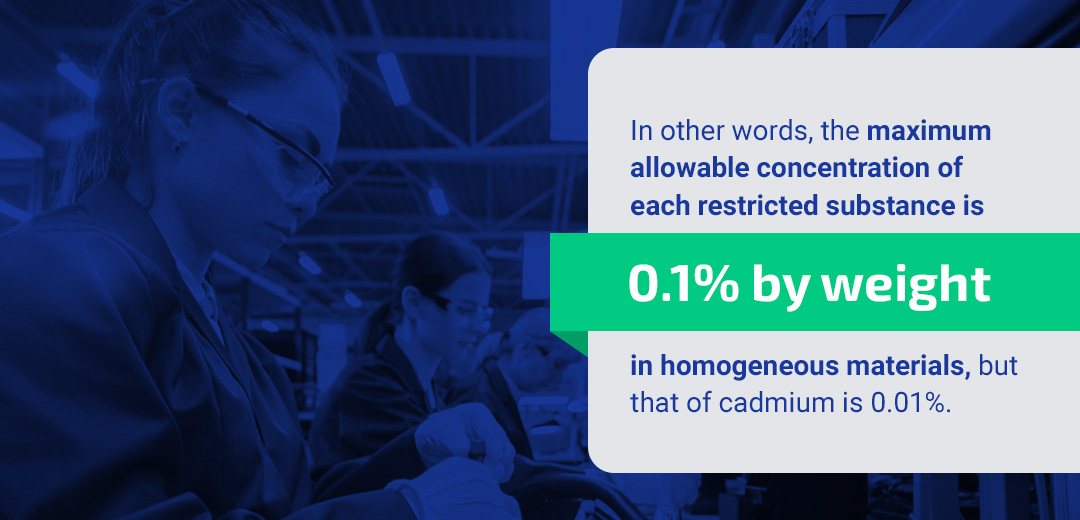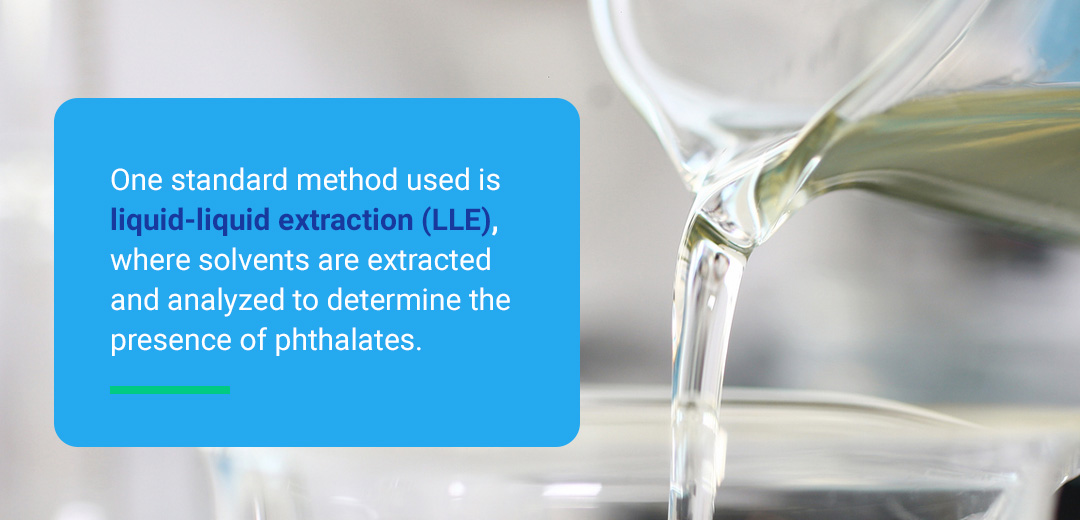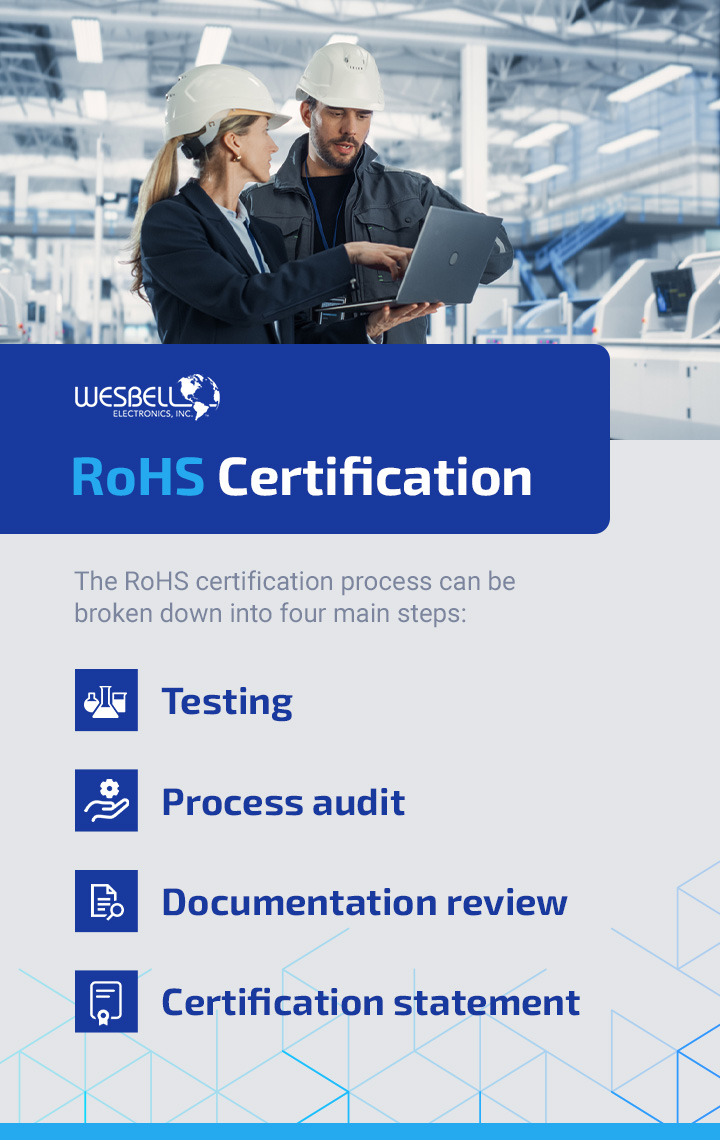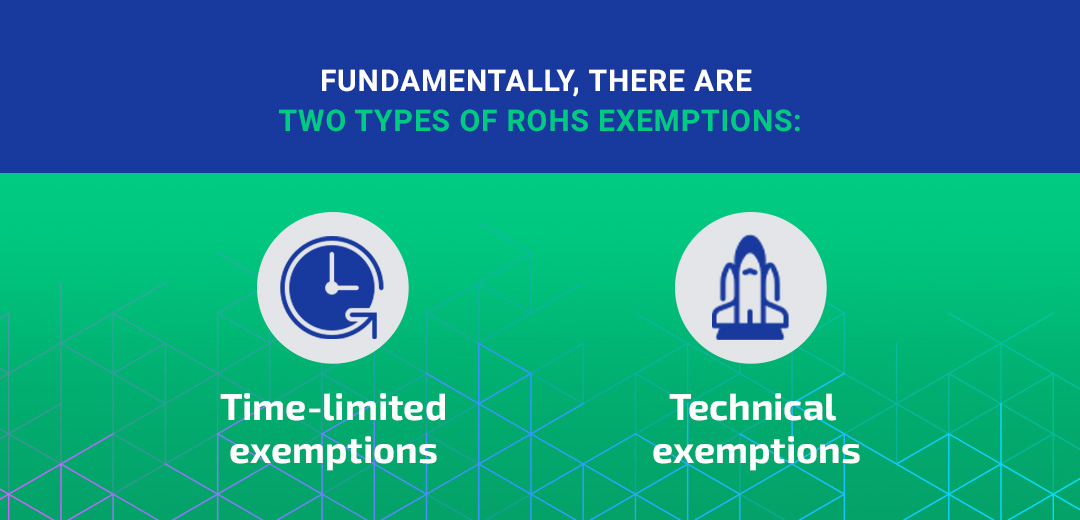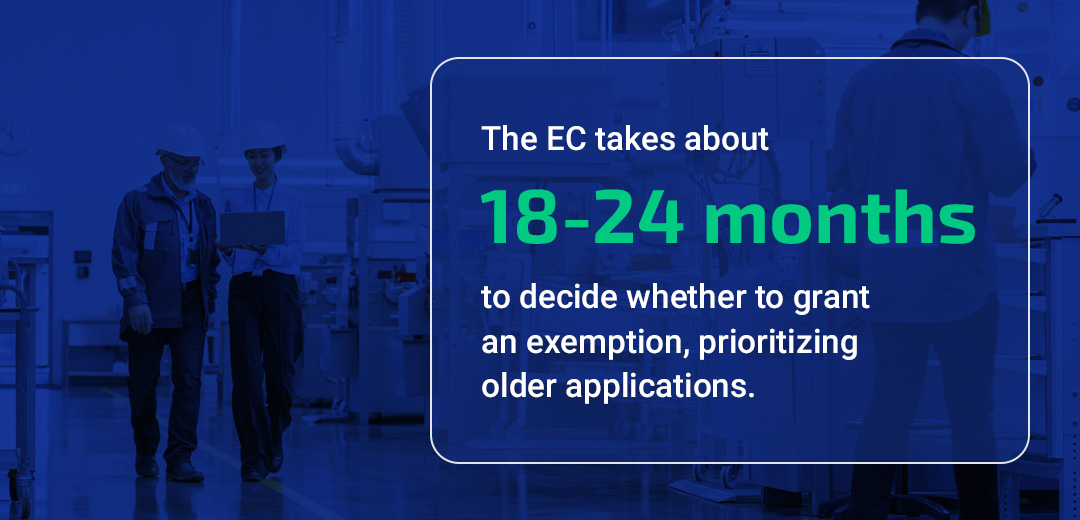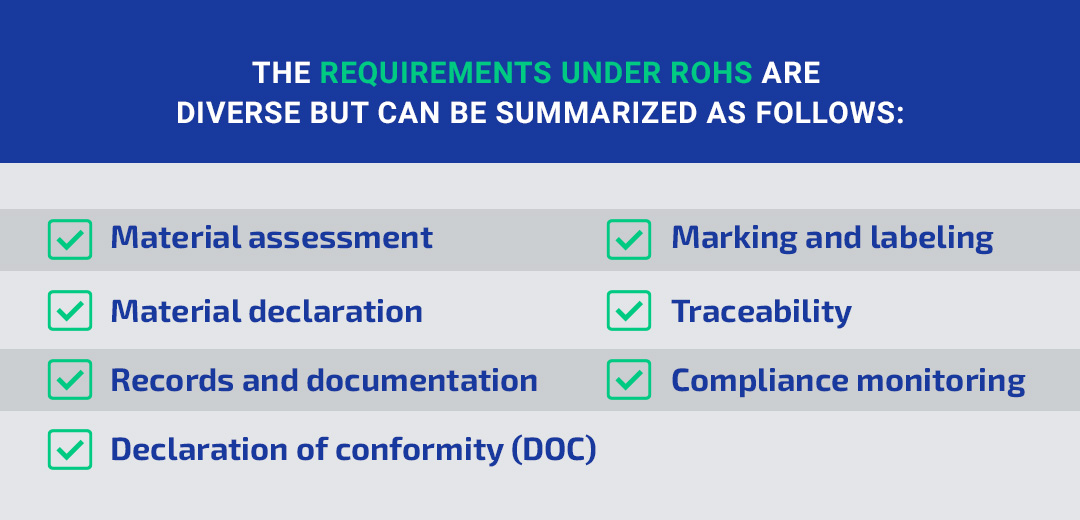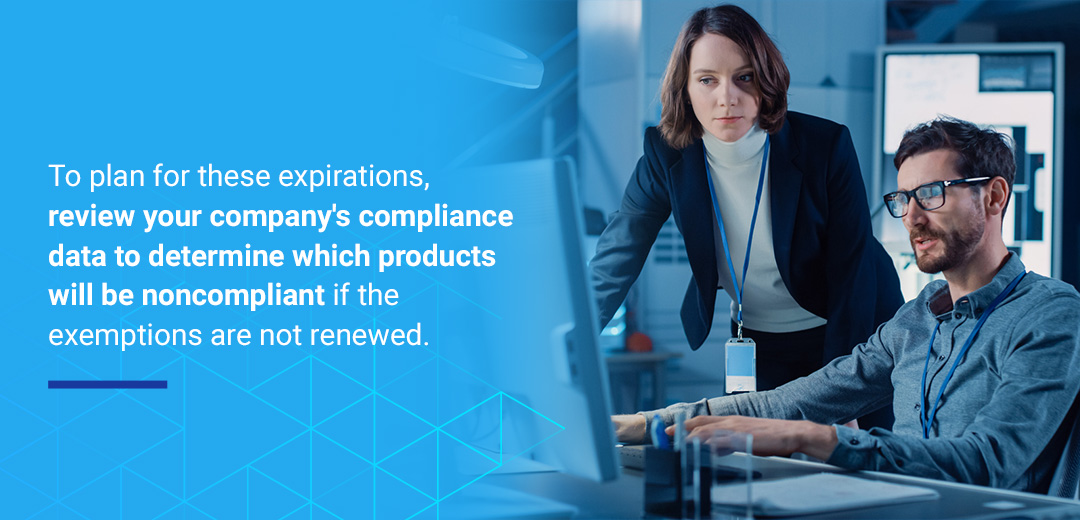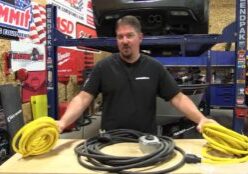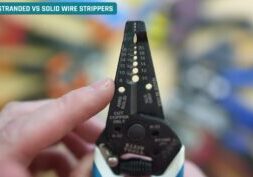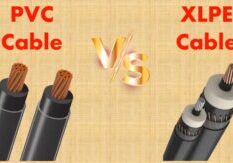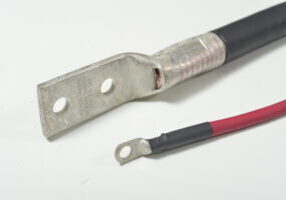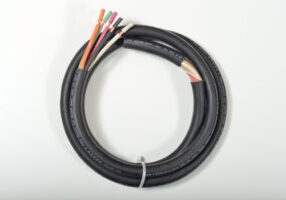
Aug 16, 2024
2024 RoHS Compliance Guide
Complying with the RoHS Directive is gaining global significance, meaning manufacturers, importers and distributors must learn about its requirements and upcoming updates. What is the meaning of RoHS, and how can you stay compliant? Why should you be concerned about a European Union (EU) law, and what are the penalties for noncompliance?
This guide discusses the EU RoHS Directive, how implementation is spreading worldwide, the exemptions sunset and expected changes to help you stay informed and compliant.
What Is RoHS?
RoHS is an acronym for “restriction of hazardous substances.” It is a directive adopted by the EU to restrict certain hazardous materials from being used in electrical and electronic equipment (EEE). The goal of the RoHS Directive is to reduce the environmental impact of these products. The current restricted substance list includes:
- Lead
- Mercury
- Cadmium
- Hexavalent chromium
- Dibutyl phthalate (DBP)
- Diisobutyl phthalate (DIBP)
- Butyl benzyl phthalate (BBP)
- Polybrominated biphenyls (PBB)
- Bis(2-ethylhexyl) phthalate (DEHP)
- Polybrominated diphenyl ethers (PBDE)
RoHS compliance protects humans and the environment. Anyone who purchases or uses electrical components must also acquire them from RoHS-compliant vendors to promote regulatory adherence.
While manufacturers are the primary entities, importers and distributors must also ensure the products they buy or sell comply with the directive. Multiple agencies have regulatory oversight over RoHS, including the following:
- The European Commission (EC): The EC reviews and reforms directives depending on new technologies and associated risks. This mandate has led to several amendments, establishing the current directive.
- The European Chemicals Agency (ECHA): The ECHA oversees the administrative and technical aspects of the directive. It handles the registration, evaluation, authorization and restriction of chemicals related to RoHS.
- Individual EU member state authorities: Various agencies in EU member states enforce RoHS regulations within their countries. This responsibility extends to setting penalties and sanctioning noncompliant organizations.
Evolution of RoHS: RoHS 1 to RoHS 3 Compliance
Since its inception, RoHS has gone through several changes. The original regulation — Directive 2022/95/EC — restricted six substances and covered only selected equipment. RoHS 2, also called Directive 2011/65/EU, was later introduced to expand equipment coverage and impose additional obligations. For example, manufacturers must affix specific markings — Conformite Europeenne (CE) markings — on finished products and produce technical documentation to show compliance.
Subsequently, RoHS 3, or Directive 2015/863, added four more restricted substances— BBP, DBP, DEHP and DIBP. These four phthalates are primarily used as insulation plasticizers and are on the list of substances of very high concern (SVHC). RoHS also introduced Category 11, a catch-all category for EEE not covered under the other categories. However, there are some exemptions.
The RoHS Directive specifies the maximum levels permitted for the 10 restricted substances. The legal threshold for all is less than 1,000 parts per million (ppm), except for cadmium, which must be below 100 ppm. In other words, the maximum allowable concentration of each restricted substance is 0.1% by weight in homogeneous materials, but that of cadmium is 0.01%.
RoHS Compliance Testing
The initial RoHS testing method is X-ray fluorescence spectroscopy (XRF). Others are Fourier-transform infrared spectroscopy (FTIR) testing and scanning electron microscope (SEM) testing. XRF is a nondestructive analytical technique used to determine the elemental components of materials. The process uses analyzers, which can be handheld, bench-top or stand-alone. Typically, the first step is using handheld XRF analyzers to examine the parts of the components with the highest chance of containing restricted substances.
With new RoHS compliance requirements, additional testing is necessary to determine the compound levels. One standard method used is liquid-liquid extraction (LLE), where solvents are extracted and analyzed to determine the presence of phthalates. It involves using gas chromatography coupled with mass spectrometry or flame ionization detection.
RoHS Certification
The RoHS certification process can be broken down into four main steps:
- Testing: Conduct XRF testing on-site and solvent extraction testing in the laboratory to determine the values of the restricted substances.
- Process audit: Review the manufacturing process used toward RoHS compliance.
- Documentation review: Review the relevant documents, including bills of materials, assembly drawings, technical files, test reports, materials declarations, and conformity certificates from suppliers.
- Certification statement: Obtain the certificate of compliance after a successful audit.
RoHS Exemptions
RoHS Directive exemptions allow the use of restricted substances in certain applications. They are necessary because eliminating some restricted substances can cause technical or economic challenges in specific industries. The EC grants exemptions after carefully evaluating and considering factors like feasibility availability or options and potential risks.
Fundamentally, there are two types of RoHS exemptions:
- Time-limited exemptions: These are exemptions limited by time. In order words, they are granted for a specific period. Time-limited exemptions require the research and development of alternate substances or materials during the exemption period.
- Technical exemptions: These exemptions are granted when a substance restriction will create technical limitations or challenges. They usually apply to products in specific industries, such as automotive, military or aerospace.
Examples of RoHS exemptions include:
- Lead in some EEE for specific applications like photodetectors
- Lead in certain electronic soldering applications with high melting temperatures
- Mercury in some special-purpose fluorescent lamps for applications in display systems
- Cadmium in some color conversion LEDs
Implementation of the RoHS Directive
To understand how the EC implements the RoHS Directive, there are three areas to consider:
1. Exemptions Procedure
The EC may approve some exemptions from RoHS restrictions. The EC will consider the following factors in an exemption request:
- Availability, reliability and practicality of substitutes
- Health, environmental and consumer safety impacts of the substitution
- Socioeconomic implications of substitution
- Potential adverse impacts on innovation
Eliminating the substance should be technically or scientifically practical. If the EC accepts the request, it will publish an extension or amendment.
2. Exemptions Timeframe
The EC takes about 18-24 months to decide whether to grant an exemption, prioritizing older applications. While the application is under review, the existing exemption remains valid until extended or amended. The EC may also reject the application and grant a 12- to 18-month transition period before the official expiration date. The EC considers the 18-month renewable application period when deciding a new expiry date. The industry must submit applications promptly to avoid an automatic rejection.
The evaluation procedure involves several steps:
- Scientific and technical assessment and consultation with stakeholders can take about 10 months.
- Further consultation with the European Parliament and member states takes place once a proposal is made.
- The EC publishes the drafted delegated decision or directive to obtain public feedback. The EC also notifies the World Trade Organization (WTO) Technical Barriers to Trade Committee.
- After deciding, the EC adopts the delegated directive and publishes the draft.
- The European Parliament and Council conduct a minimum two-month scrutiny and, if no objection is raised, publish the official delegated directive.
3. Assessment Studies
The EC conducts scientific and technical assessment studies by engaging in stakeholder consultations before making a decision. Since revising exemptions requires expert knowledge, organizations such as Oeko-Institut support the EC through evaluation processes and consultation. The exemptions under assessment are grouped into packs with specified timeframes. The EC publishes ongoing and completed assessment studies to inform the industry of progress.
Are You RoHS Compliant for 2024?
Manufacturers, importers and distributors of EEE within the EU must comply with the RoHS Directive. Covered products include:
- Large household appliances
- Small household appliances
- Communication and computing equipment
- Consumer electronics
- Lighting equipment
- Power or electronic tools
- Leisure, toys and sports equipment
- Medical devices
- Control and monitoring equipment
- Automatic dispensers
- Products not captured under those listed above
Certain products are excluded, including:
- Military equipment
- Space equipment
- Some medical equipment
- Research and development equipment
- Vehicles
- Large-scale fixed installations
- Non-road mobile machines
- Batteries
The requirements under RoHS are diverse but can be summarized as follows:
- Material assessment: Examine the product components to determine whether they contain restricted substances. If you are unsure, conduct tests to confirm the presence of restricted substances.
- Material declaration: Most manufacturers require suppliers to produce declarations, which provide information about the substance’s content to ensure the products are RoHS compliant.
- Records and documentation: Maintain accurate records of compliance assessments, including due diligence reports, test results, material declarations and compliance certificates.
- Declaration of conformity (DOC): Manufacturers must issue a DOC and technical documentation confirming the product is RoHS compliant. DOCs contain information about the manufacturer, product and substance used in the production.
- Marking and labeling: Where applicable, manufacturers must place the CE marking on the product to show compliance. This requirement includes providing information that connects the product to the manufacturer.
- Traceability: Manufacturers should establish and maintain product traceability to identify and address noncompliant products.
- Compliance monitoring: Ensure ongoing compliance monitoring by implementing procedures such as periodic testing.
Since enforcement and penalties are reserved for individual countries, the intensity of the law regarding noncompliance varies significantly. Some countries prioritize preventive measures and compliance assistance, while others have strict sanctions. For example, noncompliance in certain jurisdictions can lead to substantial fines and bans on noncompliant products. Moreover, some member states have vigorous market surveillance, resulting in heightened scrutiny when purchasing or importing devices and components.
EU RoHS Compliance: Changes and Expected Updates
The EC regularly reviews RoHS regulations to address technical progress. Amendments typically border restricted substances and exemptions. Below are critical updates to note:
1. Restricted Substances
In 2023, the EU was expected to adopt a proposed revision to add two restricted substances to the list — tetrabromobisphenol A (TBBP-A) and medium-chain chlorinated paraffins (MCCPs). However, it has been delayed as of July 2024.
TBBP-A is commonly used to reduce the flammability of synthetic resins and plastics in consumer products. The substance is a known carcinogen. MCCPs are industrial chemicals used as plasticizers or flame retardants in materials like plastics, adhesives, rubber and paints. These substances are potentially bioaccumulative and toxic to the environment.
2. Exemptions
In January 2024, the EU published Directive 2024/232 to amend Directive 2011/64/EU. The directive limits the exemption scope to the current lead and cadmium restriction entries. It has also been aligned with derogation for lead in recovered polyvinyl chloride (PVC), as defined in Regulation 2023/923. Applications and EEE captured in the exemptions are classified under Annex III of RoHS 2 and Annex I of Category 11, respectively.
Directive 2024/232 amends Annex III of RoHS 2 by adding Entry 46, which includes the following:
- Lead and cadmium in plastic profiles of electrical and electronic doors and windows containing recovered PVC material not exceeding 1.5% lead and 0.1% cadmium by weight.
- Starting May 28, 2028, rigid PVC recovered from electronic and electrical doors and windows should solely be used in producing new articles under the categories detailed in Entry 63 of Regulation 1907/2006 Annex XVII, points 18(a) to (d).
- Persons supplying PVC articles must ensure the articles are clearly marked if they contain recovered rigid PVC with a lead concentration equal to or above 0.1% by weight of the material. Where the article cannot accommodate the marking, it must be done on the packaging. This requirement must be met before pricing the articles on the market.
EU member states must adopt and publish the relevant provisions by the end of July 2024 and apply them at the beginning of August 2024. The exemptions sunset on May 28, 2028.
3. Exemption Expirations and Renewals
Several RoHS exemptions are due to expire in 2024. The EC is reviewing these exemptions, with the target adoption date being the end of 2024.
To plan for these expirations, review your company’s compliance data to determine which products will be noncompliant if the exemptions are not renewed. Second, assess the risk level of finding a suitable option and test them for RoHS adherence. Third, ensure you are only doing business with vendors or suppliers that comply with RoHS to avoid inconveniences and other supply chain challenges.
RoHS Global Initiatives
While the RoHS is primarily an EU directive, various jurisdictions are taking initiatives toward implementation. Here are some examples:
1. United States
While there are no federal restrictions, several states in the U.S. have enacted legislation based on the RoHS Directive. These include:
- California: The state legislature modeled the California RoHS law after the EU directive. The law mandates that the Department of Toxic Substances Control develop regulations prohibiting the offer and sale of covered electronic devices in the state.
- Illinois: The Electronic Products Recycling and Reuse Act adopts some EU RoHS substance restrictions. The limitations apply to specified categories of electronic devices.
- Indiana: The E-Waste law addresses the collection and recycling of e-waste. The law requires manufacturers of video display devices to disclose whether they meet the EU RoHS Directive limits.
- Minnesota: The waste management provisions under Chapter 115A of the Minnesota statutes require manufacturers of covered electronic devices to disclose compliance with RoHS substance restrictions.
- New Jersey: The Electronic Waste Management Act adopts the RoHS substance restrictions for specific electronic devices. The law prohibits selling covered electronic devices if the amount of restricted substances exceeds the EU RoHS threshold.
- New York: The Electronic Equipment Recycling and Reuse Act adopts certain RoHS substance limitations. It requires manufacturers to submit a registration showing the amount of restricted substances sold within the state.
- Rhode Island: The Electronic Waste Prevention, Reuse and Recycling Act requires manufacturers of specified devices to either utilize the state program or implement a manufacturer program. Manufacturers implementing a program must submit a plan showing compliance with the RoHS Directive.
- Wisconsin: The electronic waste recycling provisions under Chapter 287.17 of the Wisconsin statutes require manufacturers of covered electronic devices for schools and households to register with the Wisconsin Department of Natural Resources. It also requires them to disclose compliance with the RoHS Directive.
2. China
China adopted a new RoHS regulation, China RoHS 2, in 2016. It is based on the EU directive and applies to specified electrical and electronic products manufactured or imported into China. Unlike the EU directive, which prohibits specified substances, China’s version requires manufacturers to comply with relevant standards, including the labeling and marketing standard SJ/T 11364.
Regarding conformity assessment, the GB/T 26125 standard testing method is being modified to the GB/T 39560 series. This change brings the testing methods to international standards. Additionally, plans are underway to add four phthalates — DBP, BBP, DEHP and DIBP — to the list of China RoHS.
3. Japan
Importers and manufacturers of certain electronic products in the Japanese market must comply with Japan’s RoHS laws. These are the Laws for Promotion of Effective Utilization of Resources, the Japanese Recycling Law and the compulsory Industry Standard JIS C 0950.
Japan’s RoHS law applies to seven products, namely:
- Television sets
- Unit-type air conditioners
- Personal computers
- Washing machines
- Refrigerators
- Microwaves
- Clothes dryers
The restricted substances are:
- Lead
- Cadmium
- Mercury
- Hexavalent chromium
- PBB
- PBDE
4. Korea
Korea’s version of the RoHS is the Act for Resource Recycling of Electrical and Electronic Equipment and Vehicles. The National Assembly of Korea passed the law in 2007, and it came into effect in 2008. The substance restrictions are classified into two categories — electronic and electrical products and vehicles.
The restricted substances under electronic and electrical products are:
- Lead
- Mercury
- Cadmium
- Hexavalent chromium
- PBDE
- PBB
The restricted substances for vehicles include the above-listed substances, excluding PBDE and PBB.
Norway, India, Taiwan, Singapore, Ukraine, Turkey and the United Arab Emirates are other countries with RoHS restrictions.
WesBell Electronics: Your RoHS Compliance Partner
Although RoHS substance restrictions originated in Europe, various jurisdictions worldwide have enacted similar legislation. Manufacturers, imports and suppliers doing business in these jurisdictions must comply with the relevant RoHS laws to avoid legal sanctions. As a result, working with other RoHS-compliant parties is vital to remaining compliant in your operations.
WesBell Electronics is a leading supplier of bulk wire, cables and tubing in the U.S. We have been in business since 1988, gaining tremendous industry experience to help you locate the products you need and remain compliant with relevant standards.
Our trained professionals are here to evaluate your needs and provide the best electrical wire solutions for your operations. Want to learn more about how we can help you align with RoHS electronics regulations and other applicable directives? Contact us today!

